
views
Getting the Materials
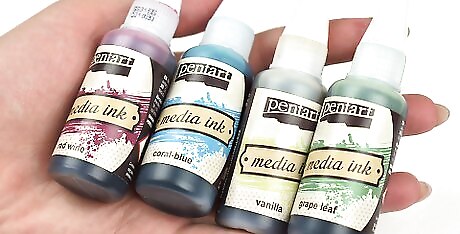
Purchase alcohol ink. You can purchase alcohol ink online or at an art store. Some inks will come in kits that have complementary colors that look good when they are mixed together. Much of the allure of alcohol ink is how the colors blend and mix, so keep this in mind when purchasing your ink.
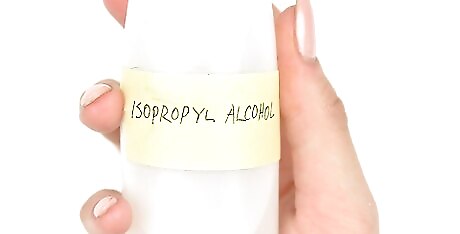
Get an alcohol ink blending solution. Buy the blending solution when you pick up the alcohol ink. This will dilute the paint and create a unique effect when dropped on top of wet alcohol ink. The blending solution is necessary to make more interesting effects with the ink but isn't mandatory. Use 91% isopropyl alcohol if you can’t find or purchase blending solution. You can also use the blending solution to clean any ink that gets on your hands or brushes.
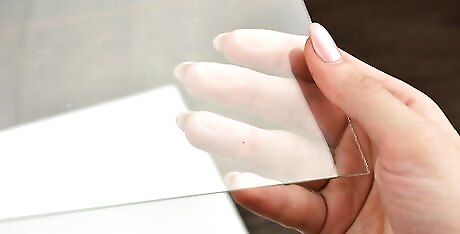
Choose a canvas to paint on. Good canvasses include glossy cardstock, shrink film, gloss paper, glass, metal, primed wood, and ceramic. Yupo paper is also a popular canvass to use when painting with alcohol ink.
Designing Your Artwork
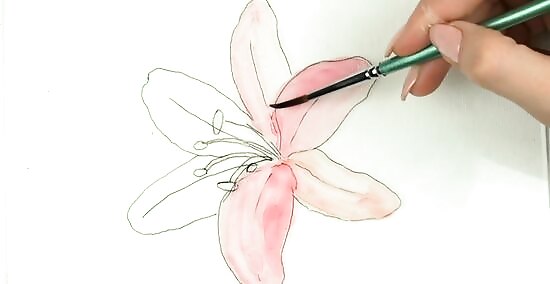
Create an outline for your painting with a pen. You can use alcohol ink to create more intricate pictures. Draw a picture on Yupo paper with a pen or pencil. Then, pour some alcohol ink into a paper or plastic palette. Absorb the ink with a brush, then fill in the drawing. Common alcohol ink pictures include flowers, mountains, and landscapes.
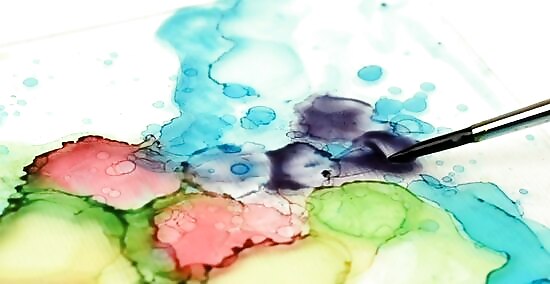
Paint freehand for an abstract look. Alcohol ink is typically used to create abstract art. If you want to create an abstract piece of art, don't plan it out at all. Use different colors and go with the flow to create something that's different every time. Choose lighter colors for a happier and brighter painting and darker colors for ominous, brooding artwork.
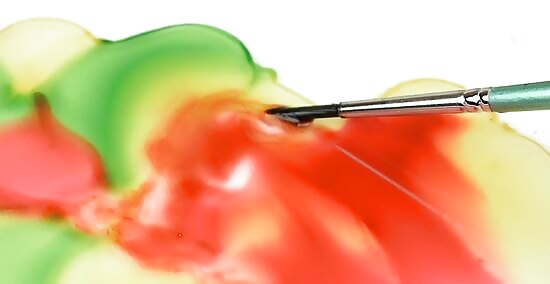
Determine how the ink mixes together. Before you start painting with alcohol ink, you should have a basic idea of alcohol ink acts when mixed. Drip different colors of the alcohol ink on a separate piece of scrap paper and use a brush to mix the colors together. See how they bleed and interact with each other. Apply the blending solution to the paint to see how it interacts with the colors. You can also practice mixing the colors together on your palette.
Painting Your Artwork

Pour a couple of drops of ink onto your canvas. Take the bottle of ink and pour a couple of drops onto whatever you’re painting on. The ink will form a small pool that can be manipulated.
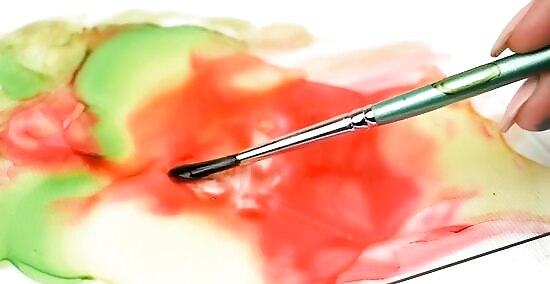
Spread the ink around with a brush. Place the tip of a brush into the pool of paint and use light strokes to apply it to your canvas. Start to get a feel for the paint and examine how the ink dissipates and bleeds. Create more pools of paint and see how they mix with one another. Painting alcohol ink with a brush is a lot like painting with watercolors.
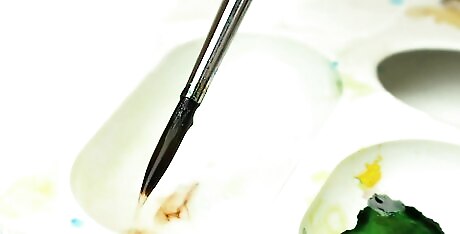
Clean your brush. Saturate your brush in a separate pool of blending solution. This will remove the ink from the brush and prevent the colors from getting muddy.
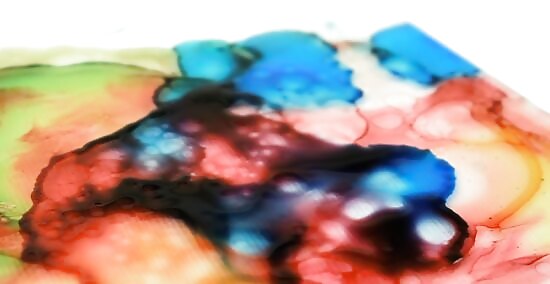
Paint over the existing ink with the blending solution. Saturate your brush with the blending solution and go over the painting. Examine how the solution interacts with the different colors and aids in the blending process. You need to apply the blending solution while the paint is still wet. If you don’t like a color you’ve applied, you can also apply a lot of blending solution to the canvas to remove the color while it’s still wet.
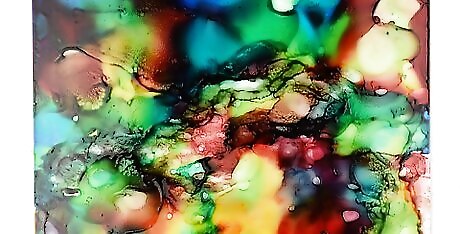
Let the paint dry. Leave the painting in a well-ventilated area for three hours and come back to see your dried painting. Now that you have an idea of how the ink and blending solution work, you can start to implement more advanced techniques.
Using Additional Techniques
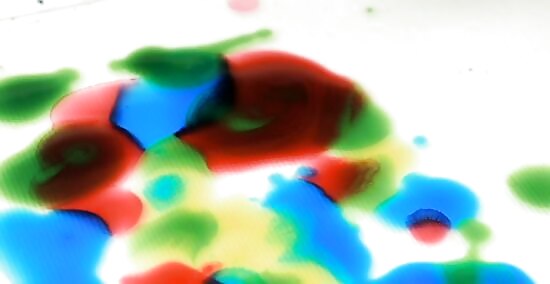
Apply a coat of blending solution to create a wavy, wet effect. Before you apply the ink to the paper, wet the surface down with the blending solution. Use a cotton ball or felt applicator to do this. Applying a coat of blending solution first will create a wavy, wet effect that you can use for landscapes or abstract paintings. You can also use this method to lay down an undercoat of color onto your canvas.
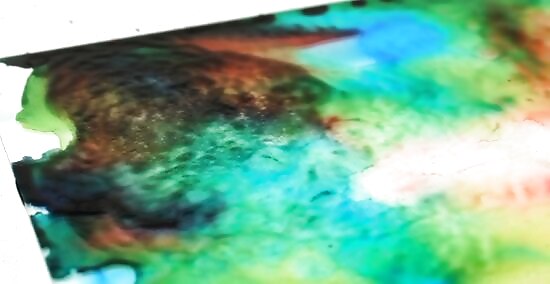
Blow the ink with canned air to create an abstract dissipated effect. Make sure to get a decent amount of the blending solution and ink on your canvass. Hold the canned air a couple of inches away from the wet alcohol ink and press the trigger to shoot air from the nozzle. This will push the paint so that it dissipates in different directions.
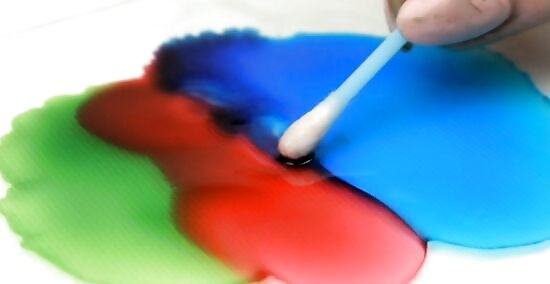
Use blender pens or cotton swabs to mix colors. You can purchase blender pens online or at an art store. These are small pens with a blending solution that comes out of the tip. Alternatively, you can use a cotton swab saturated with blending solution to do the same thing. While your painting is still wet, rub over the surface of ink with the blending pen to lighten or blend colors together.
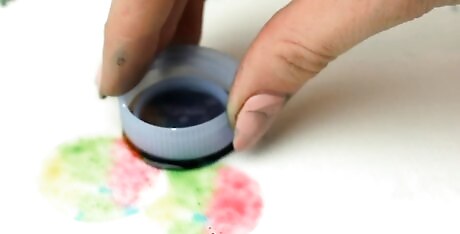
Use a felt applicator to get a marbled look. If you are painting on tile, stone, or glass, you can achieve a marbled look with alcohol ink. Pour a couple of drops of different colored ink onto a felt applicator, then dab the applicator against your stone, glass, or tile. This will create small circles that resemble marble. Use the alcohol blending solution to clean off your felt applicator.
















Comments
0 comment